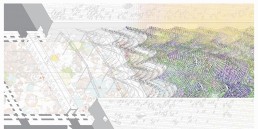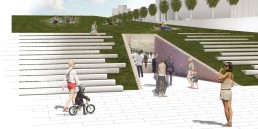“In time and with water, everything changes.”
—Leonardo da Vinci
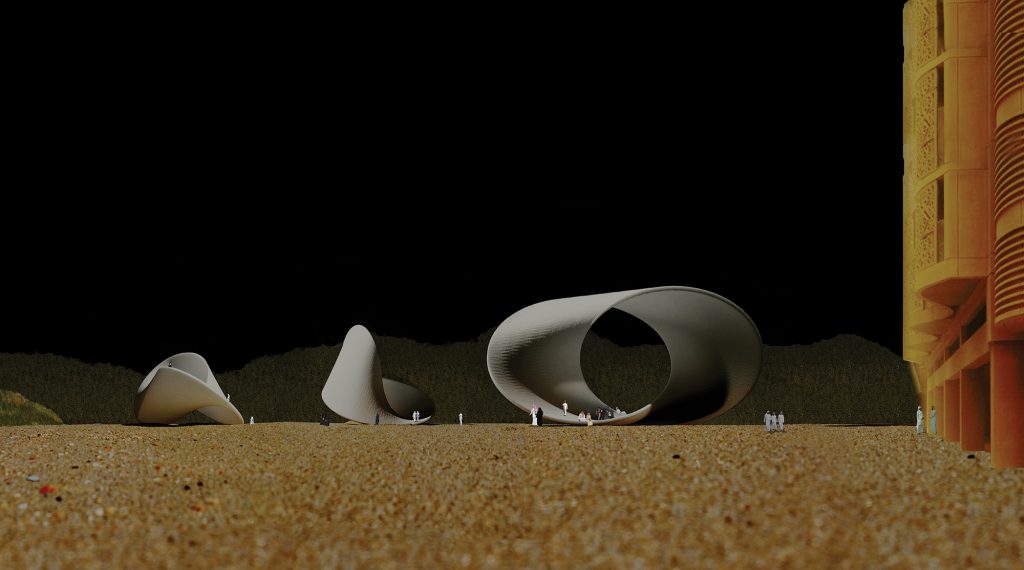
Technology: semi-transparent laminated solar panels
Annual Capacity: 2,000 MWh (ten oloids), and a trail of vegetation
A submission to the 2019 Land Art Generator design competition for Abu Dhabi
Abu Dhabi is blessed with an abundance of energy. Water is the real challenge.
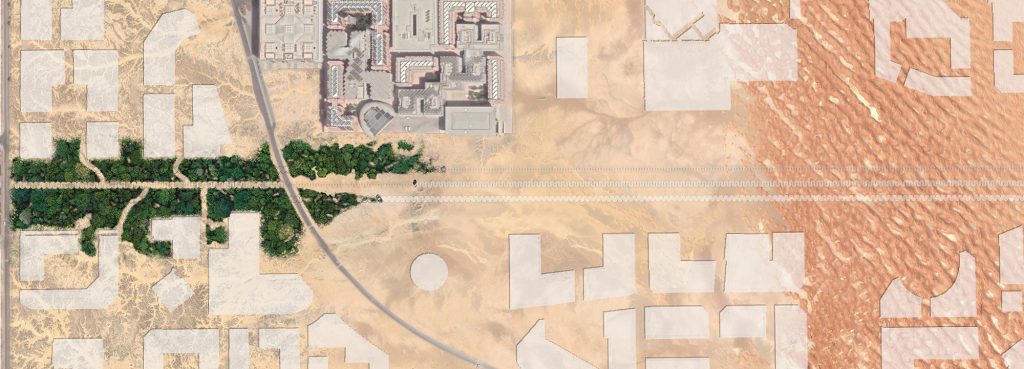
Technology: semi-transparent laminated solar panels
Annual Capacity: 2,000 MWh (ten oloids), and a trail of vegetation
A submission to the 2019 Land Art Generator design competition for Abu Dhabi
Nature has its own ways of processing the sun’s energy. Ecosystems depend on two processes to support life: photosynthesis and evaporation. Water is the driver of both. Hydrological systems can be thought of in terms of watersheds—a defined geographical unit with a full water cycle, from sea to precipitation and back to sea, interacting with topsoil, plants, organisms, and human life. Rub’ al-Khali, the world’s largest sand desert was once a functional watershed. Is it possible to restart this ancient flow of energy?
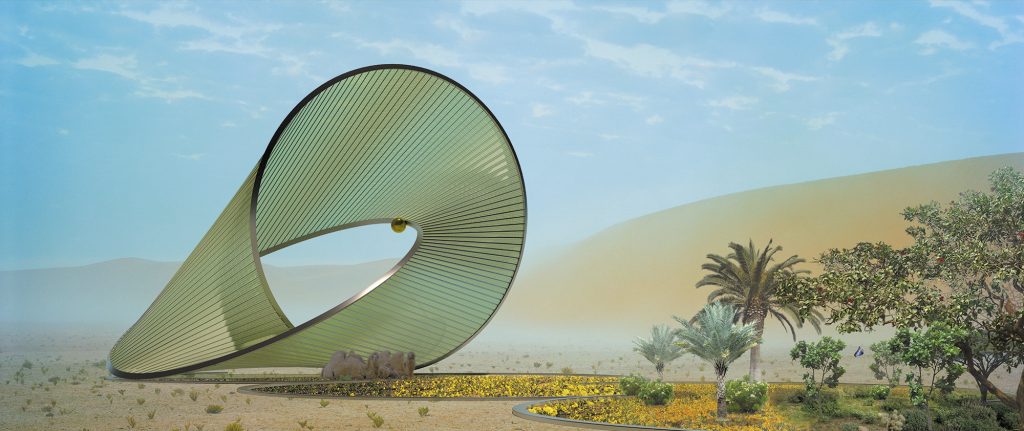
Technology: semi-transparent laminated solar panels
Annual Capacity: 2,000 MWh (ten oloids), and a trail of vegetation
A submission to the 2019 Land Art Generator design competition for Abu Dhabi
Such an ambitious project needs a place, a patron and a symbol. The Morpho butterfly’s beauty is produced by a pattern of carbon in its wings that allows a part of the light spectrum to resonates within, producing a dynamic color that reacts to its environment and varies with the angle of view. This structural color principle has been reproduced and integrated into a glass panel of photovoltaic cells that allows 15% of light to pass through. This filtered light creates the perfect cover for plants and prevents seedlings from being cooked by the desert sun.
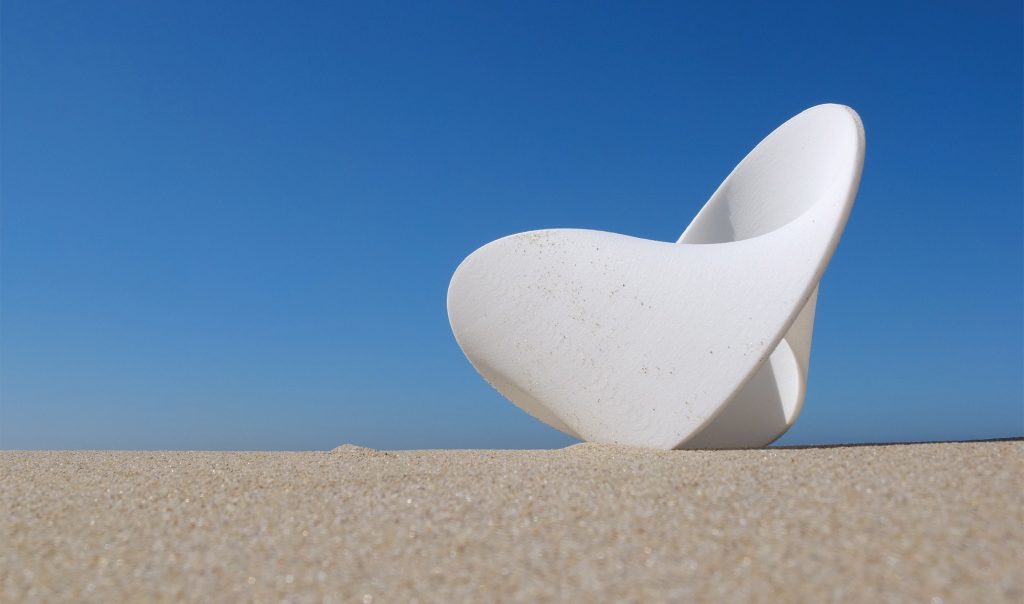
Technology: semi-transparent laminated solar panels
Annual Capacity: 2,000 MWh (ten oloids), and a trail of vegetation
A submission to the 2019 Land Art Generator design competition for Abu Dhabi
The oloid is an intriguing three-dimensional form that can move in a straight line as a ball would roll in any direction. It’s constructed by placing two equal circles in perpendicular planes with the center points of each circle placed on the edge of the other circle. Placing a surface between these rings in a loop that turns back on itself creates a Möbius-like shape. While regular solar arrays in the desert need to be cleaned of sand every week, this one simply sheds the sand by rolling over at night.

Technology: semi-transparent laminated solar panels
Annual Capacity: 2,000 MWh (ten oloids), and a trail of vegetation
A submission to the 2019 Land Art Generator design competition for Abu Dhabi
In time, a multitude of these oloids—aided by their ability to roll in a straight line—can transform a landscape on a large scale, leaving a trail of vegetation in its wake. The most important yield, however, is the production of knowledge. The oloid teaches about the transformation of vegetation, electricity generation, design, varying perspectives, resonant color waves, and natural rhythms.
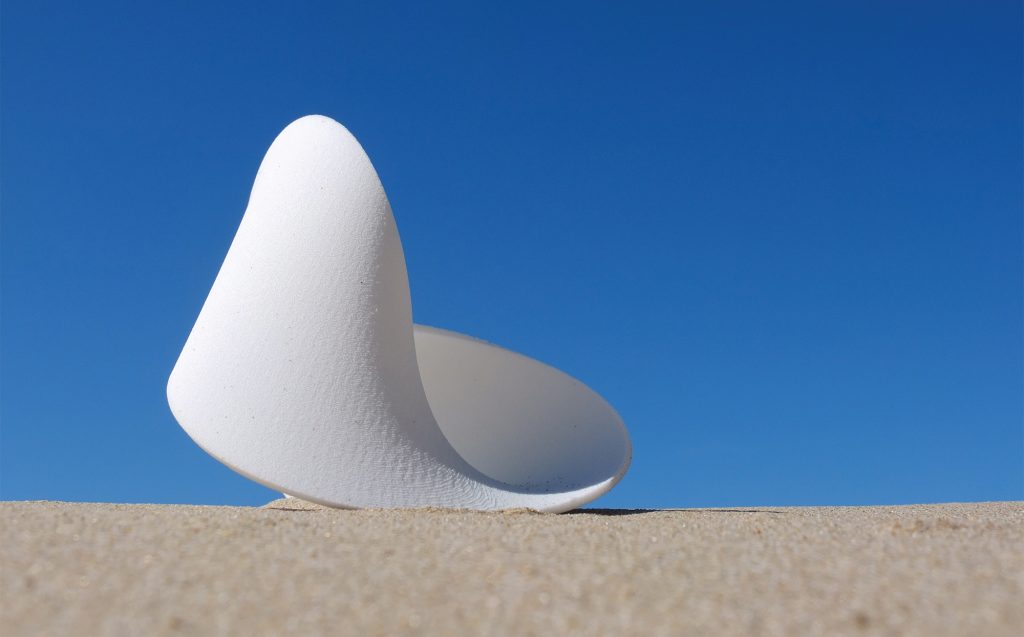
Technology: semi-transparent laminated solar panels
Annual Capacity: 2,000 MWh (ten oloids), and a trail of vegetation
A submission to the 2019 Land Art Generator design competition for Abu Dhabi
LAGI 2019 is sponsored by Masdar and is held in partnership with the 24th World Energy Congress.



